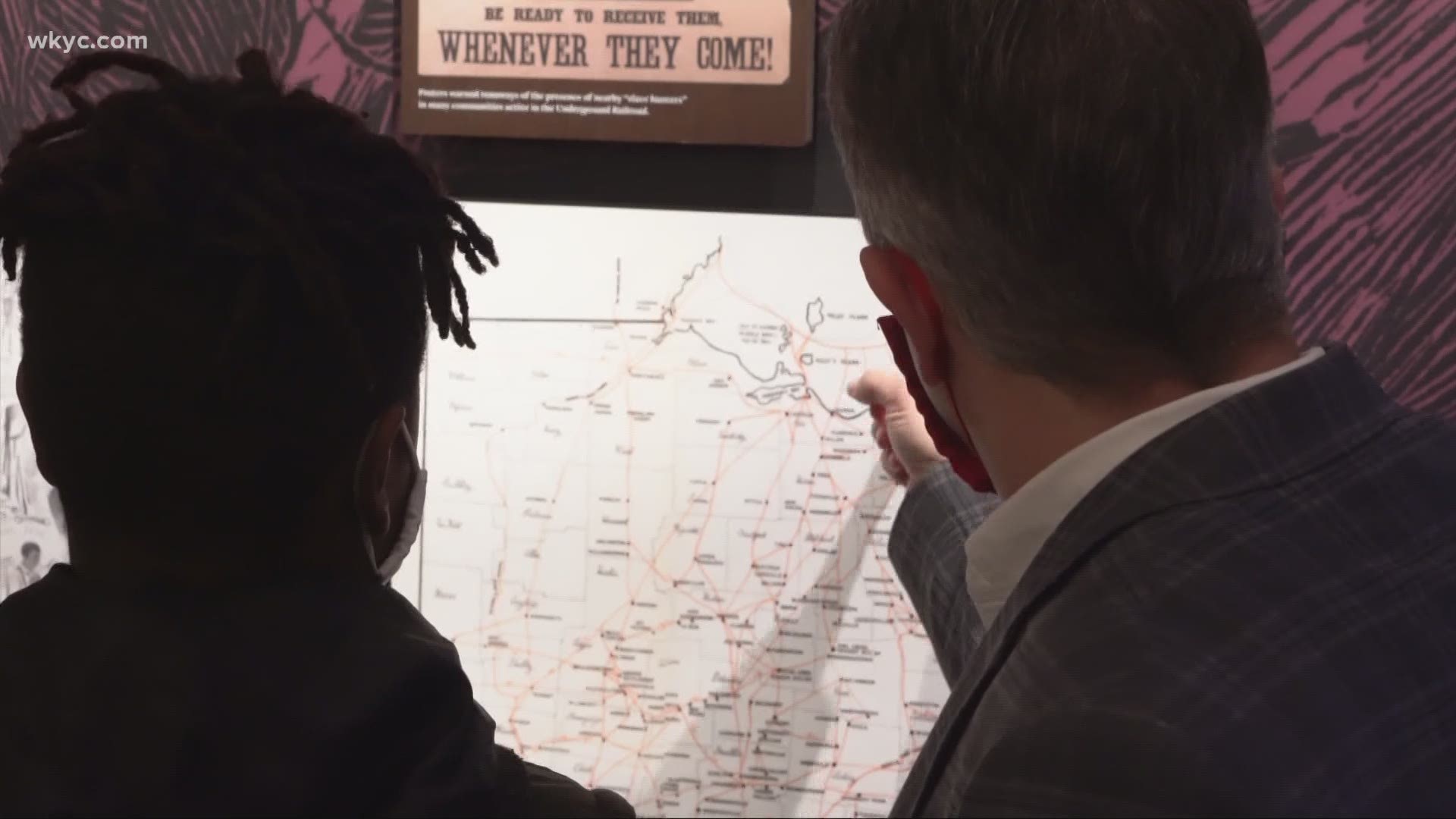CLEVELAND — The Cozad-Bates House was built for Justus Cozad by his father Andrew. It was first built in 1853, but additions were added in the 1860s and 1972.
The Cozad family settled in Northeast Ohio in the early 19th century, living along a road that's now known as Euclid Avenue. Along with other families in the area, the Cozads provided aid to freedom seekers. The Cleveland code word in the underground railroad was "hope."
"There were a number of small five houses up and down Euclid Avenue that the residents there assisted freedom seekers as they were traveling through the United States, through the North to Canada, where ultimate freedom lied," Elise Yablonsky, planning director of University Circle, Inc., told a group of Cleveland Metropolitan School District students on a Zoom call.
The Cozad-Bates Interpretive Center is not yet open to the public due to COVID-19, but it did open virtually back in November. A few weeks ago, students from the Cleveland High School for Digital Arts got a first look at this historical museum.
"The reason why we wanted to put an interpretive center there is that community, which was then East Cleveland township, we know is active in the underground railroad," Yablonsky told the students. "We're so grateful to be able to activate it with this museum space that I know potentially a couple of you may have gone in and at least seen virtually."
The digital arts students were immersed in the culture. They had an assignment: Capture the essence of the museum and a past to which they are now connected.
"They use cameras from the school and a documented the whole environment," Cleveland High School for Digital Arts film instructor, Jimmie Woody said.
Junior Earl Roberts went in with his family to take pictures. Each member had different views of the history.
"Earl did a great job," Woody said. "He was getting down on the floor and shooting different angles. His brother was standing up on top of stuff, and it was just nice to see them engaged in the Cozad-Bates in a unique way."
"[There were] more people in the underground railroad than I expected it to be," Earl said. "It was talking about the 13th, 14th, and 15th amendment, and I learned a lot about it."
Honing in on their craft, while also learning something so important.
"As a teacher, you're always trying to find ways to educate, but then also, how can they also still have fun?" Woody said.
Fun in learning Cleveland's past and its important place as the last stop for freedom.
"Not only are they going to visit the museum, but they get to be a part of it and document it in a unique way," Woody said.
To learn more about the Cozad-Bates Interpretive Center, click HERE.
RELATED HEADLINES:

